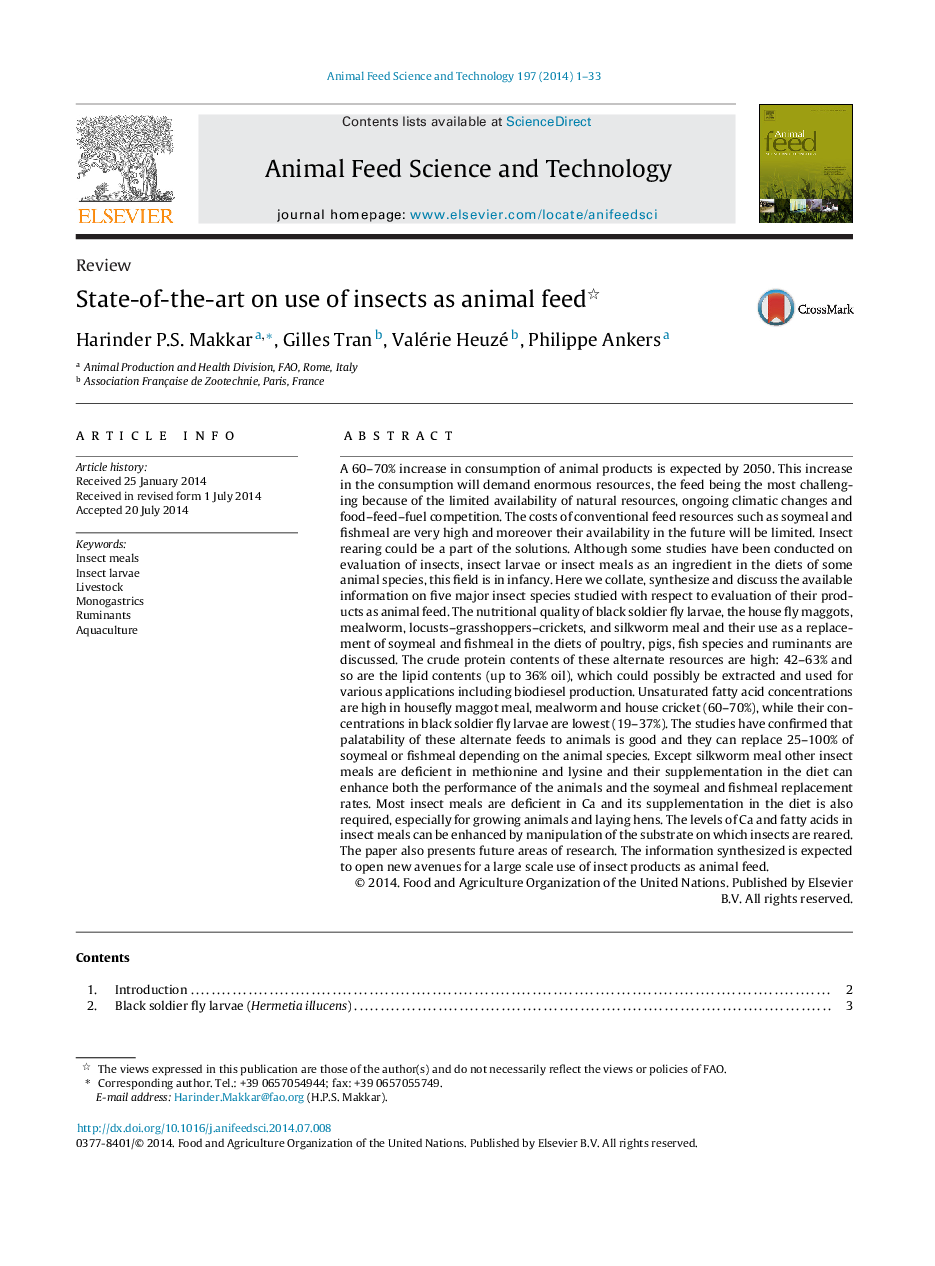| کد مقاله | کد نشریه | سال انتشار | مقاله انگلیسی | نسخه تمام متن |
|---|---|---|---|---|
| 8491563 | 1552388 | 2014 | 33 صفحه PDF | دانلود رایگان |
عنوان انگلیسی مقاله ISI
State-of-the-art on use of insects as animal feed
دانلود مقاله + سفارش ترجمه
دانلود مقاله ISI انگلیسی
رایگان برای ایرانیان
کلمات کلیدی
موضوعات مرتبط
علوم زیستی و بیوفناوری
علوم کشاورزی و بیولوژیک
علوم دامی و جانورشناسی
پیش نمایش صفحه اول مقاله

چکیده انگلیسی
A 60-70% increase in consumption of animal products is expected by 2050. This increase in the consumption will demand enormous resources, the feed being the most challenging because of the limited availability of natural resources, ongoing climatic changes and food-feed-fuel competition. The costs of conventional feed resources such as soymeal and fishmeal are very high and moreover their availability in the future will be limited. Insect rearing could be a part of the solutions. Although some studies have been conducted on evaluation of insects, insect larvae or insect meals as an ingredient in the diets of some animal species, this field is in infancy. Here we collate, synthesize and discuss the available information on five major insect species studied with respect to evaluation of their products as animal feed. The nutritional quality of black soldier fly larvae, the house fly maggots, mealworm, locusts-grasshoppers-crickets, and silkworm meal and their use as a replacement of soymeal and fishmeal in the diets of poultry, pigs, fish species and ruminants are discussed. The crude protein contents of these alternate resources are high: 42-63% and so are the lipid contents (up to 36% oil), which could possibly be extracted and used for various applications including biodiesel production. Unsaturated fatty acid concentrations are high in housefly maggot meal, mealworm and house cricket (60-70%), while their concentrations in black soldier fly larvae are lowest (19-37%). The studies have confirmed that palatability of these alternate feeds to animals is good and they can replace 25-100% of soymeal or fishmeal depending on the animal species. Except silkworm meal other insect meals are deficient in methionine and lysine and their supplementation in the diet can enhance both the performance of the animals and the soymeal and fishmeal replacement rates. Most insect meals are deficient in Ca and its supplementation in the diet is also required, especially for growing animals and laying hens. The levels of Ca and fatty acids in insect meals can be enhanced by manipulation of the substrate on which insects are reared. The paper also presents future areas of research. The information synthesized is expected to open new avenues for a large scale use of insect products as animal feed.
ناشر
Database: Elsevier - ScienceDirect (ساینس دایرکت)
Journal: Animal Feed Science and Technology - Volume 197, November 2014, Pages 1-33
Journal: Animal Feed Science and Technology - Volume 197, November 2014, Pages 1-33
نویسندگان
Harinder P.S. Makkar, Gilles Tran, Valérie Heuzé, Philippe Ankers,